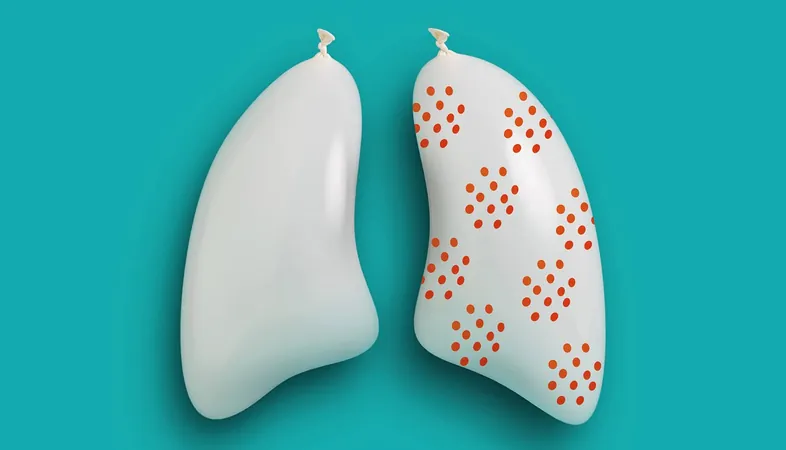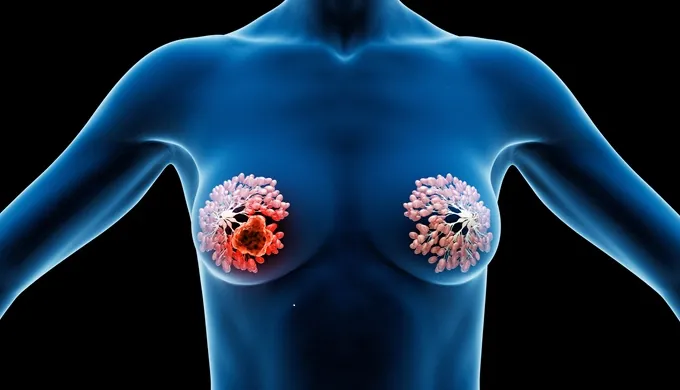
Groundbreaking Discovery Changes Everything We Know About Small Cell Lung Cancer
2025-09-17
Author: Rajesh
A Stunning New Revelation About Lung Cancer's Origin
A revolutionary study has shattered long-held beliefs about small cell lung cancer (SCLC), suggesting that this notorious disease actually originates in basal stem cells instead of the previously thought neuroendocrine cells. This finding marks a pivotal moment in our battle against an illness widely linked to smoking.
The Shift That Could Save Lives
For decades, scientists attributed SCLC's beginnings to neuroendocrine cells, but research led by scientists at Duke University, recently published in the prestigious journal *Nature*, reveals a surprising twist. The study demonstrates that basal cells—known for their ability to regenerate various lung cell types—can ignite tumors in both the aggressive neuroendocrine form and a troubling tuft-like variant.
Tuft-like Tumors: The Silent Assassins
The tuft-like form of SCLC is particularly sinister, linked to grim patient outcomes and resistance to conventional therapies. By identifying the role of basal cells in creating these dangerous tumor forms, researchers now have a pathway to develop prevention strategies that could intercept the disease before it becomes resistant and spreads uncontrollably.
Expert Insights: Redefining the Future of Cancer Treatment
Senior author Trudy G. Oliver, a professor at Duke University School of Medicine, emphasizes the significance of this research, stating, "This discovery reshapes our understanding of how small cell lung cancer begins. Our models now capture the full complexity of the disease, allowing us to focus on its most lethal forms."
Cutting-edge Techniques Unveil New Truths
In the study, scientists utilized cutting-edge genetically engineered mice, 3D tumor organoids, and an expansive dataset comprising 944 human SCLC tumor samples. Surprisingly, the tuft-like tumors only materialized when specific genetic mutations were introduced into basal cells, not neuroendocrine cells. This revelation indicates a fundamental transformation in our comprehension of the disease.
The Power of Cell Fate Plasticity
Through innovative lineage barcoding techniques, lead author Abbie S. Ireland shed light on how SCLC cells can shapeshift in a phenomenon known as cell fate plasticity. "This adaptability helps clarify why the disease resists treatment and presents new opportunities for halting its progression into aggressive cancer," Ireland explains.
New Horizons for Early Detection and Treatment
The study's findings pave the way for the first accurate lab models of the resilient tuft-like SCLC form. With this robust understanding, scientists can now advance the fight against cancer through enhanced early detection methods and targeted therapies.
Targeting the Disease Before It Starts
Oliver asserts, "We now possess the tools to investigate how the immune system interacts with these basal cells before their transformation into aggressive cancer, opening doors to therapies that could potentially halt the disease in its tracks."


 Brasil (PT)
Brasil (PT)
 Canada (EN)
Canada (EN)
 Chile (ES)
Chile (ES)
 Česko (CS)
Česko (CS)
 대한민국 (KO)
대한민국 (KO)
 España (ES)
España (ES)
 France (FR)
France (FR)
 Hong Kong (EN)
Hong Kong (EN)
 Italia (IT)
Italia (IT)
 日本 (JA)
日本 (JA)
 Magyarország (HU)
Magyarország (HU)
 Norge (NO)
Norge (NO)
 Polska (PL)
Polska (PL)
 Schweiz (DE)
Schweiz (DE)
 Singapore (EN)
Singapore (EN)
 Sverige (SV)
Sverige (SV)
 Suomi (FI)
Suomi (FI)
 Türkiye (TR)
Türkiye (TR)
 الإمارات العربية المتحدة (AR)
الإمارات العربية المتحدة (AR)